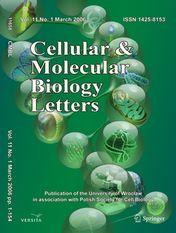
“Cannabinoids display various pharmacological activities, including tumor regression, anti-inflammatory and neuroprotective effects.
To investigate the molecular mechanisms underlying the pharmacological effects of cannabinoids, we used a yeast two-hybrid system to screen a mouse brain cDNA library for proteins interacting with type 1 cannabinoid receptor (CB1R). Using the intracellular loop 3 of CB1R as bait, we identified 14-3-3β as an interacting partner of CB1R and confirmed their interaction using affinity-binding assays. 14-3-3β has been reported to induce a cell cycle delay at the G2/M phase.
We tested the effects of cannabinoids on cell cycle progression in HeLa cells synchronized using a double-thymidine block-and-release protocol and found an increase in the population of G2/M phase cells. We further found that CB1R activation augmented the interaction of 14-3-3β with Wee1 and Cdc25B, and promoted phosphorylation of Cdc2 at Tyr-15.
These results suggest that cannabinoids induce cell cycle delay at the G2/M phase by activating 14-3-3β.”







